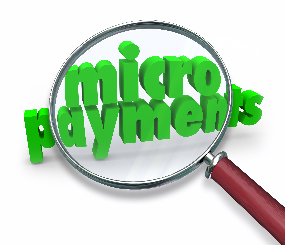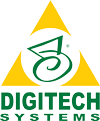What’s behind shift to microservices? You, the consumer
Even more cost-effective information management is coming your way.
Digitech Systems is at the forefront of the microservices and microtransactions-based billing movement reshaping how consumers buy document management services and other business technology. Instead of paying a large upfront license fee for one-size-fits-all software that includes many features that might go unused, you pick from the latest in individual cloud information management services and save further by paying only for the amount those services are actually used. No more wasted time and money on bloated, aged software packages.
An example of a microservice is Digitech Systems’ next-generation robotic process automation (RPA). The lowest-cost RPA in the industry, you pay only pennies per hour for the time the electronic bots are performing common back-office tasks. The technology can be used independently from other Digitech Systems products or as a prebuilt integration.
Not familiar with microservices and microtransactions-based billing? Keep reading to learn more.
What are microservices and microtransactions-based billing?
Typical of new technology, the descriptions and terminology used for microservices are still works in progress. Some liken microservices to buying a car equipped with only the features you need. Others think of individual microservices as train cars connected to a train engine (i.e., a cloud services platform.) Others see microservices as like Legos or a set of gears.

As for the current terminology, at Digitech Systems we favor the terms microservices and microtransactions-based billing but there are other terms in use. They include containerization, composable technology, pay-per-use and usage-based pricing.
You may know the term microtransactions from the video game industry where players pay small fees or micro payments for in-game upgrades and add-ons such as extra lives, weapons caches, character outfits, etc. This puts the power of choice—and the power of the purse—In individual player’s hands. And that’s the goal that guides our development of microservices. Give organizations of all sizes the freedom to choose the services they want. Technology advances enable microservices providers to keep precise tabs on the specific technologies used and then calculate payments accordingly.

Where do microservices and microtransactions fit in information management? Aided by the advances in cloud services technology, a wide range of tools and technologies now can be converted into microservices to be readily available and billable apart from each other. Among them: file directory management, robotic process automation, optical character recognition, digitization; automated file and folder monitoring; process workflows; document retention/destruction and file sharing. Look for the rollout of these and other features to gain speed. Use only the features you want and avoid paying for the rest.
Digitech Systems’ legacy of putting consumers first
In 1997, Digitech Systems founder Scott Matthews started the company with the declaration that digital document management “didn’t have to be so hard and it didn’t have to cost so much.” The subsequent years have seen the company at the forefront of cloud information systems (1999), artificial intelligence-enabled forms processing and data extraction (2016) and business process automation. The addition of microservices as an option for organizations of any size continues this legacy.
Christina Robbins, Digitech Systems’ Vice President of Communications Strategy and Marketing, says microservices and microtransactions-based billing drew the company’s interest early on because of their popularity with both consumers and the fit with the company’s objectives; it’s an expression of the company’s commitment to offering top-quality performance at a reasonable price. “A microtransactions-based billing environment really allows us to see that price performance balance through for every customer, whether it’s a small mom and pop single-user environment or the largest global conglomerate with hundreds of thousands of users. Every business now has the ability to pay for only the technology they actually need and use as opposed to this traditional environment we’ve been in where you have to pay for everything in order to get the tiny 20 percent subset of features that your business actually needs,” she says in this InfoSource podcast.
Benefits go beyond money savings
Microservices technology is flexible and modular. You can add or replace components to meet evolving requirements. Whether in response to changing internal business needs or a desire to keep current on the latest technology, microservices provide the flexibility to stay agile and competitive.
Microservices also offer seamless scalability. You can add or remove components based on your growth. You can effortlessly scale your applications without compromising performance or user experience. Another benefit is the technology facilitates seamless integration with external systems, services and APIs.
Looking ahead, expect microservices to keep growing in popularity. These powerful tools will improve the cost-effectiveness and quality of your business technology efforts. By understanding more about them, you can also put them to work to improve the efficiency and effectiveness of your entire organization.
--------------------------------------------------------------------------Digitech Systems Sales and Marketing

Contact Info
+1 866.374.3569
Email Support
Email Sales
Daily: 8:00 am - 6:00 pm CST/CDT
Saturday & Sunday: Closed
Copyright © 2025 Digitech Systems, LLC - All Rights Reserved